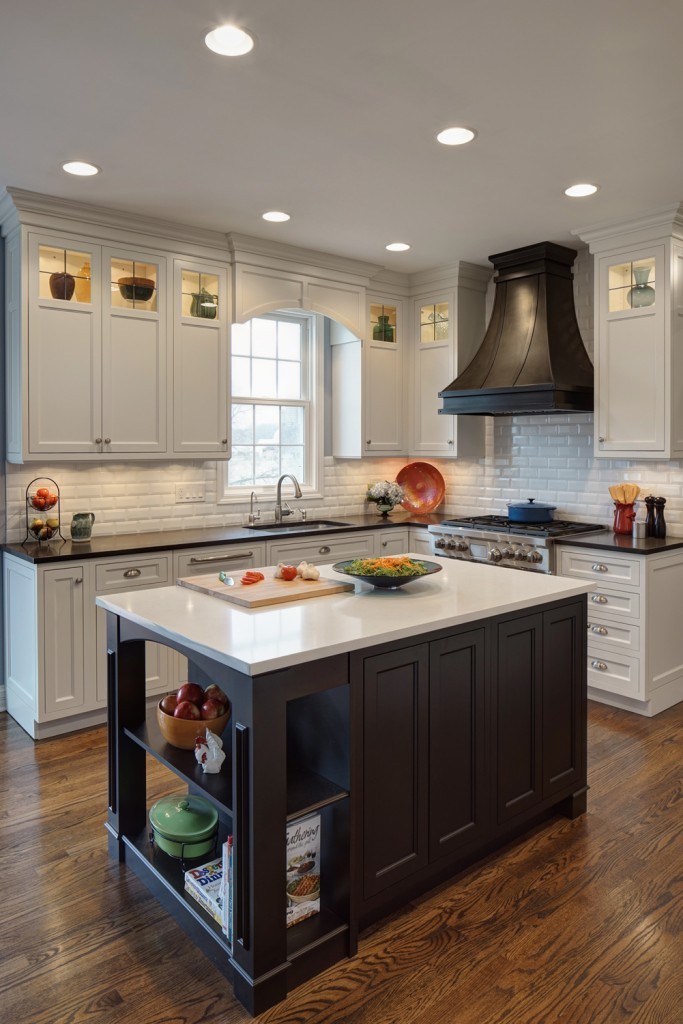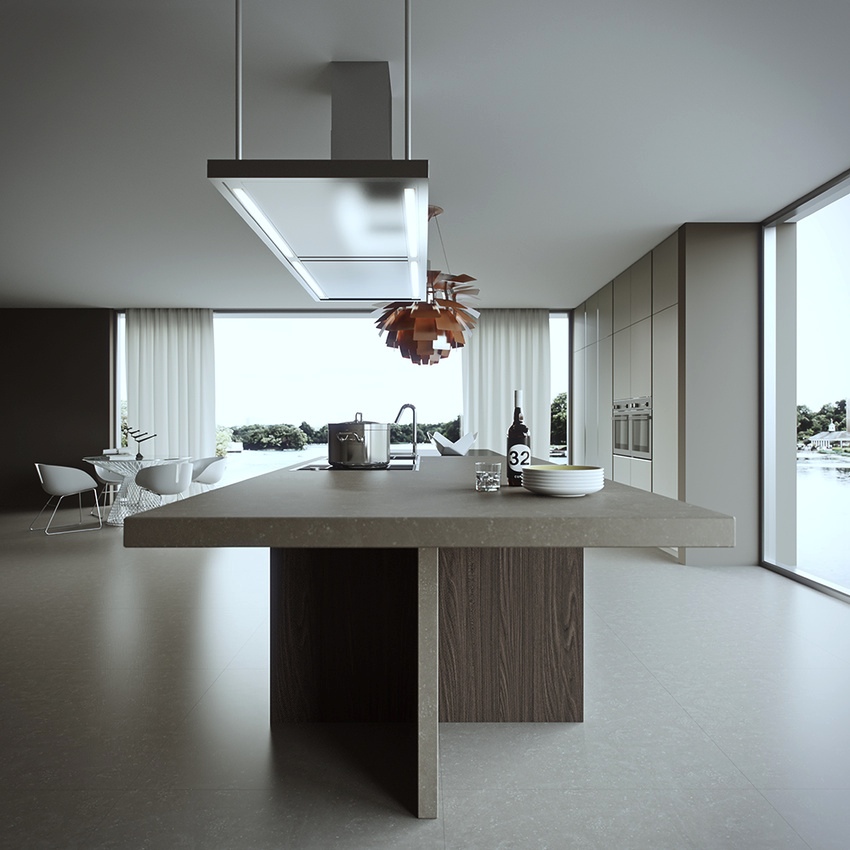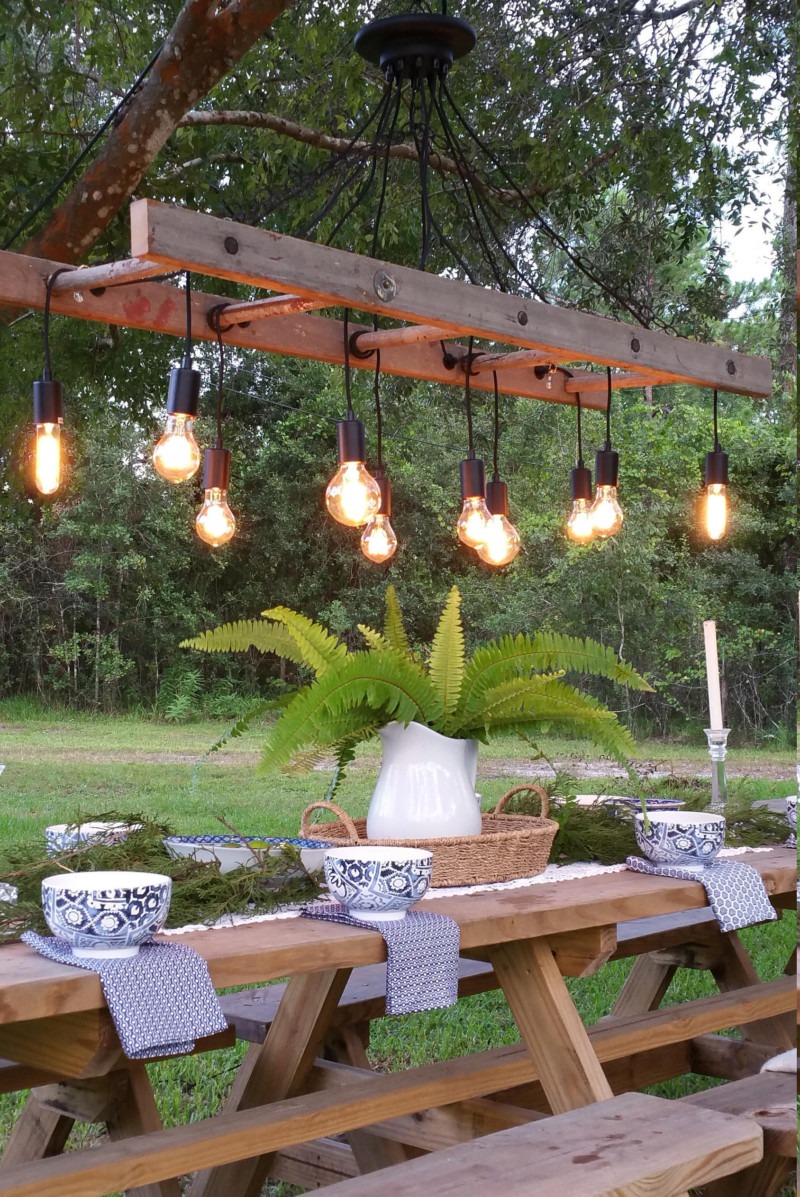Overhead lighting for a kitchen island is an essential element in both the functionality and aesthetics of the kitchen space. The kitchen island is often the centerpiece of the room, serving as a multifunctional area for food prep, casual dining, and social gatherings. Therefore, having the right overhead lighting is crucial for setting the right mood and ensuring the space is practical for everyday tasks. When selecting overhead lighting, it’s important to consider the balance between form and function, as well as the overall design of the kitchen. The lighting should complement the island’s purpose while adding visual appeal.
The first step in choosing overhead lighting for a kitchen island is determining the type of lighting that best suits your needs. There are several options, including pendant lights, chandeliers, recessed lighting, and linear fixtures. Pendant lights are perhaps the most popular choice due to their versatility and wide range of styles. They offer focused lighting, which is ideal for task-oriented activities like chopping vegetables or reading recipes. Chandeliers, on the other hand, provide a more decorative element, making them a great choice for kitchens with a more formal or eclectic design. Recessed lighting can offer a clean, minimalist look, while linear fixtures span the length of the island and provide even illumination.

Pendant lighting is especially favored for kitchen islands because it allows for customization in terms of both the number of fixtures and the height at which they are hung. Many designers recommend hanging pendants in odd numbers, such as three or five, depending on the size of the island. The height is also a critical factor, as the lights need to be positioned at a level that offers sufficient illumination without obstructing views across the kitchen. Typically, pendants should be hung 30-36 inches above the surface of the island to achieve the best balance between light distribution and aesthetic appeal.
When considering the size and scale of the lighting fixtures, it’s essential to match them to the dimensions of the kitchen island and the room itself. For a smaller island, smaller pendants or a modest-sized fixture might be the right choice, while a larger island may call for more substantial fixtures or multiple pendants. The goal is to avoid overwhelming the space with overly large lighting, but also to ensure the lights don’t get lost in the design. Proportion is key to maintaining a cohesive look in the kitchen, especially since the island is typically the focal point of the room.

Lighting style plays a major role in the overall ambiance of the kitchen. Modern kitchens may benefit from sleek, minimalistic pendants with clean lines and simple finishes, such as brushed nickel or matte black. In contrast, a farmhouse kitchen might call for more rustic lighting fixtures, such as wrought iron chandeliers or wood-accented pendants. Industrial-style lighting, often featuring exposed bulbs and metal finishes, can bring a raw, edgy vibe to the space. The style of the lighting should complement the cabinetry, countertops, and other elements in the kitchen to create a unified and harmonious design.
Another important consideration for overhead kitchen island lighting is the type of bulb and light intensity. LED bulbs have become the go-to choice for their energy efficiency, long lifespan, and bright illumination. Many LED bulbs are dimmable, which allows for flexible lighting control throughout the day. Bright task lighting is essential during meal preparation, while softer lighting may be more appropriate during social gatherings or family dinners. Warm-toned bulbs create a cozy, inviting atmosphere, while cooler tones lend a more modern and crisp feel to the kitchen space.

The color and finish of the lighting fixtures can have a significant impact on the overall kitchen design. Chrome, brass, and copper finishes are popular choices, each bringing its own unique flair. Brass fixtures, for example, offer a vintage-inspired elegance that works well in both traditional and modern settings. Copper adds warmth and a touch of luxury, while chrome or stainless steel is perfect for a sleek, contemporary look. Matte black fixtures are also increasingly popular, providing a bold contrast against lighter-colored kitchen islands or countertops. The finish of the fixtures should tie in with the rest of the kitchen hardware for a cohesive and polished look.
The functionality of the kitchen island lighting should never be overlooked. While style is essential, the primary purpose of the lighting is to provide adequate illumination for the various tasks performed at the island. This is why it’s important to choose lights that offer both ambient and task lighting. Some kitchen islands serve as a space for homework, crafts, or casual dining, so having the ability to adjust the brightness or direct light where needed is a huge benefit. Many modern lighting options include adjustable arms or dimmer switches, which allow for greater flexibility.
Energy efficiency is another factor to consider when choosing overhead lighting for a kitchen island. LED fixtures are a popular choice because they consume far less energy than traditional incandescent bulbs and last much longer, reducing the need for frequent replacements. In addition to energy savings, many LED lights are available in a wide range of styles and color temperatures, making it easy to find the perfect match for your kitchen. Plus, their ability to work with dimmer switches adds to their versatility and energy-saving potential.

One common concern when installing overhead lighting in the kitchen is the potential for shadows. Shadows can be problematic, especially when preparing food at the island. To avoid this issue, it’s important to position the lights strategically. Multiple light sources, such as pendants spaced evenly over the island, can help reduce shadows and ensure even lighting across the surface. Additionally, using recessed lighting or under-cabinet lighting in conjunction with pendants can further eliminate any dark spots, providing a well-lit and functional kitchen space.
Another aspect to consider is the use of layered lighting. Kitchen lighting should not rely solely on overhead fixtures, but instead, incorporate multiple layers of light to achieve both form and function. This can include ambient lighting from ceiling fixtures, task lighting from pendants or under-cabinet lights, and accent lighting to highlight specific features of the kitchen. A well-lit kitchen is not only more functional but also more inviting, making it a space where people naturally want to gather.
Customizability is an appealing feature of many modern lighting options. Adjustable pendants, for example, allow you to change the height of the fixture, which can be particularly useful if you have a multi-use island that serves as both a workspace and a dining area. Some lighting fixtures come with interchangeable shades, allowing you to switch up the style without replacing the entire fixture. This level of flexibility is particularly beneficial for those who like to refresh their décor from time to time or for spaces that serve multiple purposes.

For those who want to make a bold statement, oversized lighting fixtures or uniquely shaped pendants can add a dramatic flair to the kitchen island. Statement lighting becomes a focal point in the kitchen, drawing the eye and creating a conversation piece. Whether it’s a large, sculptural chandelier or an oversized globe pendant, choosing a standout fixture can transform the entire look of the kitchen. However, it’s important to ensure that these larger fixtures do not overpower the space and that they complement the other design elements in the room.
Smart lighting technology has made its way into kitchen design, offering homeowners greater control over their lighting. Many modern kitchen island lights can be connected to smart home systems, allowing you to adjust brightness, color temperature, and even schedule when the lights turn on and off, all from a mobile device. This not only adds convenience but can also contribute to energy savings. Smart bulbs or smart switches are an easy way to upgrade your kitchen lighting without having to replace your existing fixtures.
Overhead lighting for a kitchen island plays a crucial role in both the design and functionality of the kitchen. The right lighting enhances the visual appeal of the space while providing practical illumination for everyday tasks. With so many options available, from pendant lights to chandeliers, and from sleek modern fixtures to more rustic designs, there’s a solution for every kitchen style. By considering factors such as size, style, bulb type, and functionality, you can create the perfect lighting setup that not only complements your kitchen island but also elevates the entire room.

Common Mistakes to Avoid
One common mistake when selecting overhead lighting for a kitchen island is choosing fixtures that are too small or too large for the space. Proportion is key to creating a balanced look, so be sure to measure the island and the room before selecting your lights.
Another mistake is neglecting to install dimmer switches, which allow you to adjust the brightness depending on the time of day or the task at hand.
Additionally, failing to consider the height at which the fixtures are hung can result in lights that are either too low, obstructing views, or too high, leaving the island poorly illuminated.
Lastly, not accounting for the overall kitchen design and choosing lighting that clashes with other elements in the space can lead to a disjointed look.

How high should I hang pendant lights above my kitchen island?
The standard height for hanging pendant lights above a kitchen island is 30-36 inches from the surface of the island to the bottom of the fixture. This height allows for adequate task lighting without obstructing views or conversation across the island. However, the specific height can vary depending on the height of the ceiling and the size of the fixtures. Adjustable pendants can provide flexibility, allowing you to raise or lower the lights as needed.
What type of lighting is best for a kitchen island?
Pendant lights are often considered the best option for kitchen islands due to their ability to provide focused task lighting. However, chandeliers, linear fixtures, or even recessed lighting can work well depending on the kitchen’s design and lighting needs. The key is to choose lighting that balances function with style, ensuring that the island is well-lit for food preparation while also contributing to the overall aesthetic of the space.
How many pendant lights should I install over my kitchen island?
The number of pendant lights you need depends on the size of your kitchen island. For a smaller island, two pendants may suffice, while larger islands typically require three or more. Many designers recommend hanging pendants in odd numbers, such as three or five, to create a more visually pleasing arrangement. Spacing the lights evenly across the length of the island will ensure even illumination.

What are the benefits of using LED bulbs in kitchen island lighting?
LED bulbs offer numerous benefits for kitchen island lighting. They are highly energy-efficient, consuming less electricity than traditional incandescent or halogen bulbs. LED bulbs also have a longer lifespan, which means you won’t have to replace them as frequently. Additionally, many LED lights are dimmable and available in a variety of color temperatures, allowing you to customize the lighting to suit your needs and the overall mood of the kitchen.
Can I mix different lighting styles over my kitchen island?
Yes, mixing different lighting styles can create a dynamic and layered look in the kitchen. For example, you might pair industrial-style pendant lights with a more traditional chandelier to add contrast and interest. The key is to ensure that the different styles complement each other and the overall design of the kitchen. Mixing finishes, such as brass and black, can also create a more eclectic and personalized look.
How do I avoid creating shadows with overhead lighting?
To avoid shadows, it’s important to use multiple light sources. Spacing pendant lights evenly over the kitchen island helps distribute light more uniformly. Additionally, using recessed lighting or under-cabinet lighting in conjunction with pendants can eliminate dark spots and provide even illumination across the entire kitchen. Positioning the lights strategically ensures that the work surface is well-lit from all angles, reducing the chance of shadows forming.

Outdoor Antique Farmhouse Ladder Chandelier with Vintage Edison Bulbs

Kitchen Island, lights, barn door

Related Posts:
- Portfolio Kitchen Lighting
- Colour Changing Led Kitchen Lights
- Kitchen Under Cabinet Lighting Tubes
- Rustic Copper Kitchen Lighting
- How To Install Kitchen Light Fixture
- Kitchen Fluorescent Light Fixture Covers
- Rectangular Flush Mount Kitchen Light
- Kitchen Island Lighting Design
- How High To Hang Pendant Light Over Kitchen Sink
- Vintage Kitchen Lighting Design